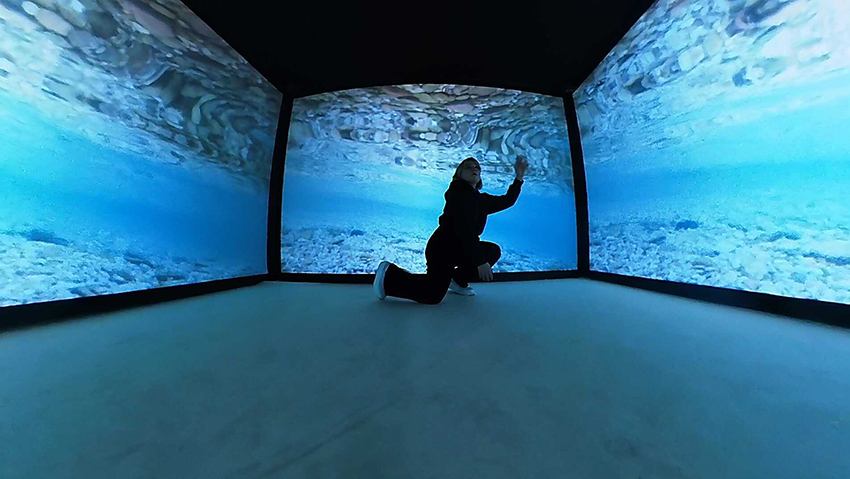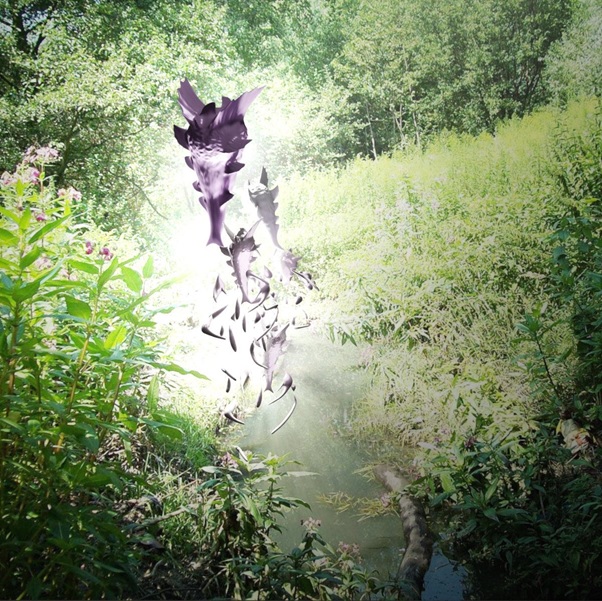The aim of the project is to create a multimedia work that is responsive to the movement of the user. I want to create an immersive environment that is a simulation of immersion and relationship with water.
The artistic tools and means I mainly use in the Immersion project are videos from under the water. Aesthetically, we experience water in different ways. I wanted to show its ability to reflect the world. Such as how the mirror effect of water takes many forms, from strongly defined, clear reflections to those that are completely blurred. And how we interact with water. By presenting video footage, I show the extraordinary underwater world. The journeys that, I made in the summer of 2021, gave me the opportunity to record and collect documentation of different types of marine waters, from different areas of Europe. To get the viewer to interact with my four-channel installation, I use a Kinect camera. Thanks to this technology and the Touchdesigner software, the user’s body, scanned by the camera, goes as a digital image, a collection of dots and digits into virtual reality and interacts with the video footage. The design of the Cave Automatic Virtual Environment further enhances the immersive experience with its cubic structure and projection projected from outside the cubic room. As the installation is interactive, the user becomes the choreographer of the projection. Through his or her movement, he or she triggers transformations; the more dynamically he or she moves, the more transformations there are or become, like splashing water. Personally, being in the space of the installation, I try to tell a short story of being immersed in water, and how the water reacts to my body. Performance is a very important part of the work, happening on and in front of the screen. As a result and in the digital space of the installation, in the program and in the image. Video art, performance art, and the themes of hydro art are the currents into which my work fits.
The significance of my project can be seen in two aspects. On the one hand, it is a purely aesthetic-technological, immersive journey into an underwater world. On the other hand, the work draws’ attention to the relationship that occurs between man and water. What influence do we have on it, and it on us? By extension, what impact do we have on the environment? The body in relation to water and its different kinetics is also an important element. How the physical properties of water interact with our body.
The components of the installation ‘Immersion’ are video footage, Cave Automatic Virtual Environment, Kinect camera, user, computer, Touchdesigner visual programming environment, Resolume software, sounds and text work.

